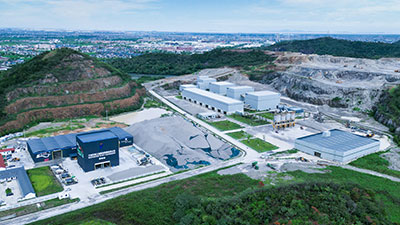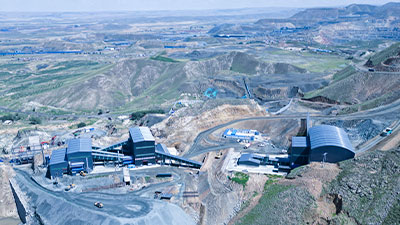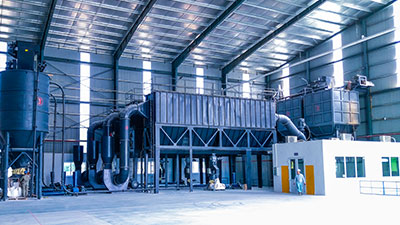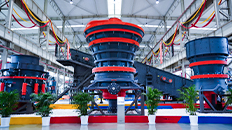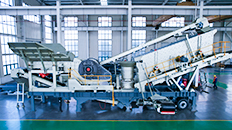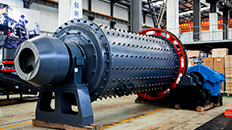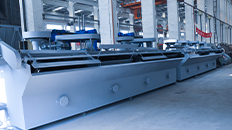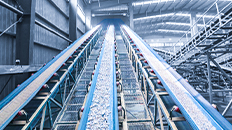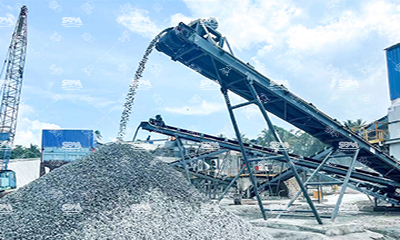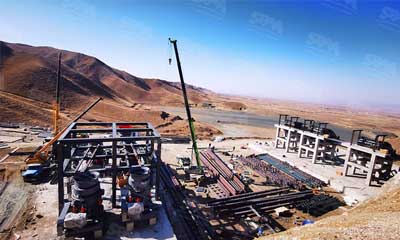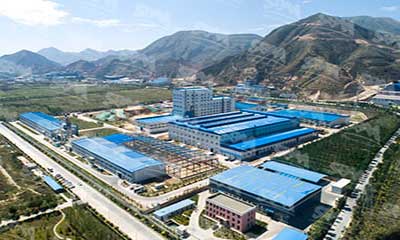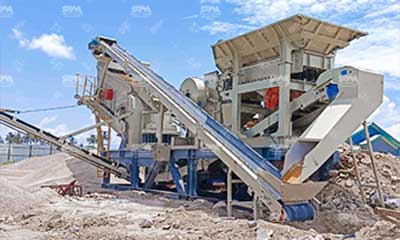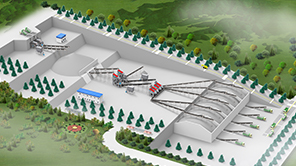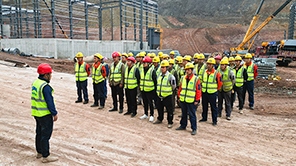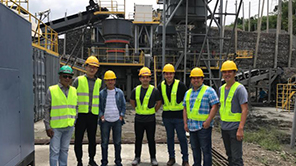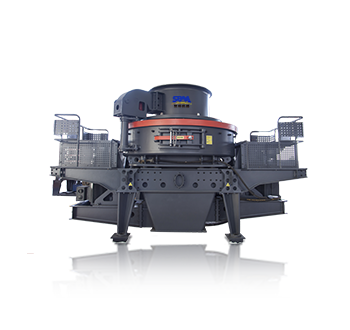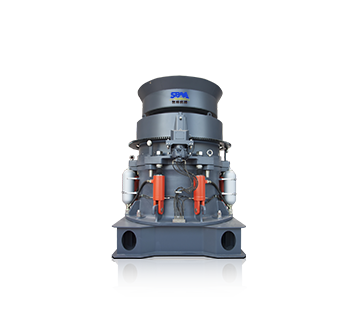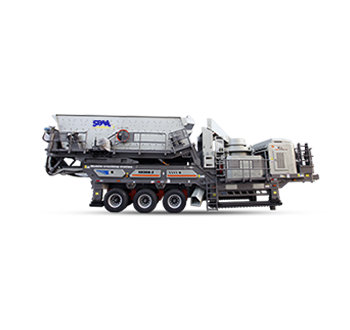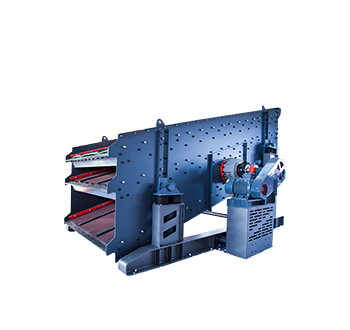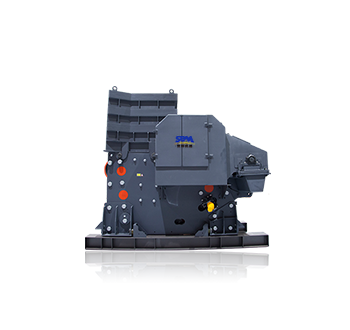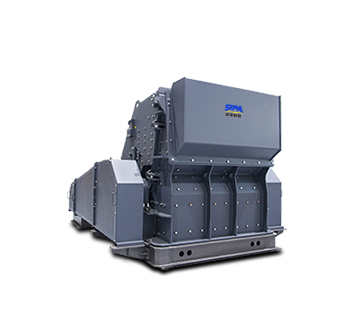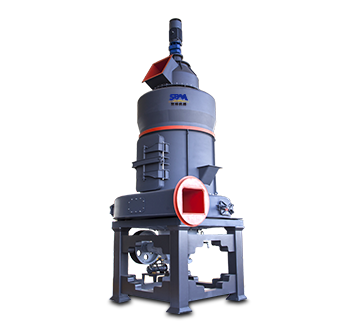Summary:The process of crushing rocks to make gravel aggregates involves several steps, including extraction, primary crushing, secondary crushing, screening, and finally, stockpiling the finished product.
Gravel aggregates are essential in various construction, landscaping, and industrial applications. They are used in concrete production, road building, drainage systems, and more. Producing high - quality gravel aggregates involves a systematic process of crushing rocks. This guide will comprehensively explore the methods, equipment, and considerations involved in crushing rocks to make gravel aggregates.

Definition and Types of Gravel Aggregates
Gravel aggregates are composed of crushed stones and are categorized into two main types: coarse aggregates and fine aggregates. Coarse aggregates typically consist of larger particles (greater than 4.75 mm), while fine aggregates include smaller particles (less than 4.75 mm). Both types of aggregates play a vital role in construction, providing the necessary strength, stability, and drainage properties.
Applications of Gravel Aggregates
- 1. Road Construction: Gravel is used as a base material for roads and highways, providing a stable foundation.
- 2. Concrete Production: Crushed gravel is a key ingredient in concrete, contributing to its strength and durability.
- 3. Landscaping: Gravel is often used in gardens, pathways, and driveways for aesthetic purposes and drainage.
- 4. Drainage Systems: Gravel aggregates facilitate water drainage in various landscaping and construction applications.
What is The Process of Making Aggregates?
The process of crushing rocks to make gravel aggregates involves several steps, including extraction, primary crushing, secondary crushing, screening, and finally, stockpiling the finished product.
1. Extraction of Raw Material
The first step in producing gravel aggregates is the extraction of raw materials from quarries or pits. This can be done through:
- Open-Pit Mining: Involves removing overburden to access the rock layers beneath. This method is commonly used for large-scale operations.
- Quarrying: Involves extracting rock from a quarry, where the rock is usually blasted to break it into manageable pieces.
2. Primary Crushing
Once the raw material is extracted, the next step is primary crushing. The primary crushing stage is the initial step in reducing large rocks to a more manageable size. Its main goal is to break down the mined or quarried rocks into pieces that can be further processed in the subsequent crushing stages. This helps to increase the efficiency of the overall crushing process and prepares the material for more precise size reduction.



The most common equipment used for primary crushing includes:Jaw Crusher and Gyratory Crusher.
Jaw Crushers: One of the most commonly used primary crushers. Jaw crushers work by using a fixed jaw and a moving jaw. The rock is fed into the gap between the two jaws, and as the moving jaw reciprocates, it squeezes the rock, causing it to break. They are known for their high crushing ratio, ability to handle large feed sizes, and durability. For example, in a large - scale quarry operation, a large - capacity jaw crusher can process rocks up to several hundred millimeters in diameter.
Gyratory Crushers: Gyratory crushers consist of a cone - shaped mantle that gyrates inside a concave bowl. The rock is fed into the top of the crusher, and as the mantle rotates, it crushes the rock against the concave surface. Gyratory crushers are suitable for handling large volumes of hard and abrasive rocks. They are often used in mining operations where continuous and high - capacity crushing is required.
Typical Feed and Product Sizes
Feed Sizes: In primary crushing, the feed size of the rocks can vary widely depending on the source and the mining or quarrying method. For example, in open - pit mining, rocks can be several meters in diameter. However, most jaw and gyratory crushers are designed to handle rocks with a maximum feed size of around 1 - 1.5 meters.
Product Sizes: After primary crushing, the product size typically ranges from 100 - 300 mm. This size reduction makes the material suitable for further processing in the secondary crushing stage.
3. Secondary Crushing
After primary crushing, the material is often too large for use as gravel aggregates. Therefore, secondary crushing is necessary to achieve the desired size. The secondary crushing stage further reduces the size of the rocks that have already been processed in the primary crushing stage. It refines the particle size and shape, bringing the material closer to the desired final product specifications. This stage is crucial for achieving the right balance between particle size distribution and product quality.



Cone Crushers: Cone crushers use a conical mantle that rotates eccentrically inside a concave bowl. The material is crushed between the mantle and the bowl as it moves down through the crushing chamber. Cone crushers are highly effective for crushing medium - to - hard rocks. They can produce a more uniform particle size compared to some other crushers, making them suitable for applications where a specific particle shape and size distribution are required, such as in the production of high - quality concrete aggregates.
Impact Crushers: Impact crushers work by using the impact force of a rapidly rotating rotor to break the rocks. The rock is fed into the crusher and is thrown against impact plates or breaker bars, causing it to shatter. Impact crushers are well - suited for crushing softer to medium - hard rocks and can produce a more cubical particle shape, which is desirable for many construction applications as it improves the workability of concrete and the strength of road surfaces.
Size Reduction and Quality Improvement
Size Reduction: In secondary crushing, the goal is to reduce the particle size of the material from the primary crusher to a range of 20 - 80 mm. This further size reduction is essential for preparing the material for the final crushing and screening processes.
Quality Improvement: Secondary crushers not only reduce the size but also improve the quality of the aggregates. They help to break down any remaining large particles more evenly, resulting in a more consistent particle size distribution. Additionally, the crushing action can shape the particles to be more angular or cubical, which enhances the interlocking properties of the aggregates in applications like concrete and road construction.
Tertiary and Quaternary Crushing (if necessary)
Situations Requiring Further Crushing
When producing very fine - grained gravel aggregates or when strict particle size and shape requirements need to be met, tertiary and even quaternary crushing may be necessary. For example, in the production of aggregates for high - performance concrete used in large - scale infrastructure projects or for specialized applications like the manufacture of precast concrete products, a more precise and fine - grained product is often required. Additionally, when recycling construction materials, multiple crushing stages may be needed to break down the complex mixtures of concrete, asphalt, and other materials into usable gravel aggregates.

Specialized Equipment for Fine Crushing
Vertical Shaft Impact (VSI) Crushers: VSI crushers are commonly used in tertiary and quaternary crushing. They operate by accelerating the material to high speeds and then impacting it against anvils or other particles. VSI crushers are highly effective in producing a cubical - shaped product with a very fine particle size, often in the range of 0 - 20 mm. They are widely used in the production of high - quality sand and fine gravel aggregates for applications where a smooth and consistent texture is desired, such as in the finishing layers of concrete floors.
Hammer Mills: Hammer mills use a series of hammers that rotate at high speeds to break the material. They are suitable for crushing softer materials and can produce a relatively fine - grained product. Hammer mills are often used in the recycling industry to break down waste materials into small - sized aggregates that can be reused.
4. Screening
Once the rocks have been crushed to the desired size, the next step is screening. Screening separates the crushed material into different sizes, ensuring that the final product meets specifications.
Vibrating screens are one of the most commonly used screening devices in the gravel aggregate industry. They consist of a screen deck that vibrates, causing the material to move across the screen surface. The vibration helps to separate the particles based on their size, with the smaller particles passing through the screen openings and the larger particles being retained on the screen. Vibrating screens can be adjusted to achieve different screening efficiencies and can handle a wide range of particle sizes. They are available in various configurations, such as single - deck, double - deck, and multi - deck screens, depending on the specific screening requirements.

How Screening Works to Separate Different - Sized Aggregates
Size - Based Separation Principle: Screening equipment operates based on the principle of size - based separation. The screen openings are designed to allow particles smaller than a certain size to pass through while retaining particles larger than that size. For example, a vibrating screen with 10 - mm screen openings will allow particles smaller than 10 mm to pass through, while particles larger than 10 mm will be retained on the screen surface and move along the screen until they are discharged.
Multi - Stage Screening: In many gravel aggregate production plants, multi - stage screening is used to achieve a more precise separation of the material into different size fractions. For instance, a three - stage screening process may first separate the material into large, medium, and small fractions. The large fraction may then be sent back for further crushing, while the medium and small fractions are further screened to obtain even more specific size ranges. This multi - stage screening process allows for the production of a variety of gravel aggregate products with different size specifications to meet the diverse needs of the market.
5. Stockpiling
After screening, the final step is stockpiling the finished gravel aggregates. This involves storing the aggregates in piles for future use. Proper stockpiling techniques are essential to prevent contamination and ensure the quality of the aggregates.
Best Practices for Crushing Rocks into Gravel Aggregates
To ensure efficient and effective crushing operations, consider the following best practices:
1. Conduct Regular Maintenance
Regular maintenance of crushing equipment is crucial for ensuring optimal performance. This includes routine inspections, lubrication, and timely replacement of worn parts. A well-maintained machine operates more efficiently and produces higher-quality aggregates.
2. Monitor Production Metrics
Tracking key production metrics, such as throughput, downtime, and product quality, can help identify areas for improvement. Use data analytics to optimize operations and make informed decisions.
3. Implement Quality Control Measures
Establishing quality control measures ensures that the produced gravel aggregates meet industry standards. This may involve regular testing of aggregate size, shape, and composition.
4. Train Personnel
Proper training for operators and maintenance staff is essential for maximizing productivity and safety. Ensure that personnel understand the operation of equipment and safety protocols.
5. Optimize the Crushing Circuit
Analyzing and optimizing the entire crushing circuit can lead to significant improvements in efficiency. This may include adjusting the configuration of crushers, screens, and conveyors to minimize bottlenecks and enhance flow.
Crushing rocks to produce gravel aggregates is a complex process that requires careful planning and execution. By understanding the various stages of crushing, the factors that influence the process, and best practices for operation, companies can optimize their production and ensure high-quality aggregates. Whether for road construction, concrete production, or landscaping, the importance of gravel aggregates cannot be overstated. With the right equipment, techniques, and commitment to quality, the crushing process can yield exceptional results that meet the demands of the construction industry.

